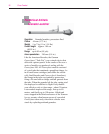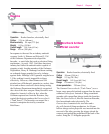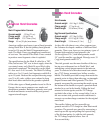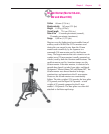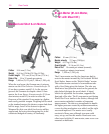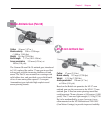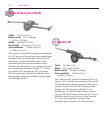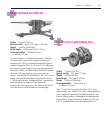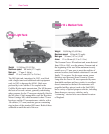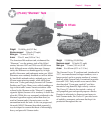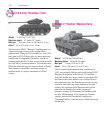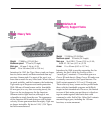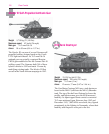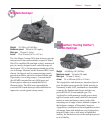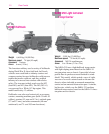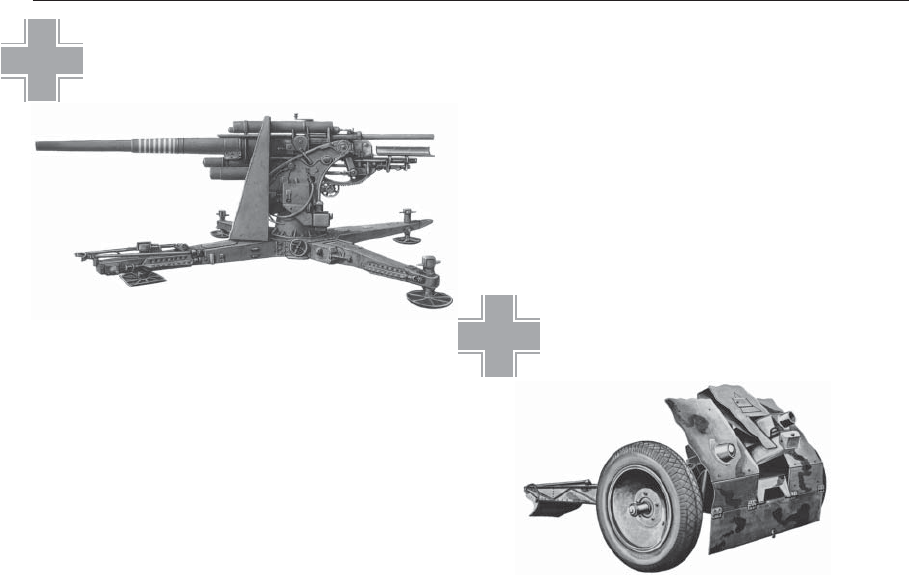
Chapter 5 Weapons
103
88-mm Antitank Gun (Pak 43)
I.G. 18 7.5-cm Light Infantry Gun
Caliber
75 mm (2.95 in.)
Muzzle velocity
221 mps (725 fps)
Weight
400 kg (880 lbs)
Barrel length
883 mm (34.75 in.)
Range
3,566 m (3,900 yds)
Armor penetration
96 mm (3.8 in.)
at 100 m (110 yds)
The 7.5 cm leicht Infanterie Geschutz 18 (7.5-cm
light infantry gun, model 1918) was a short-barreled,
close-support weapon that fired high-explosive and
hollow-charge rounds. Although more sophisticated
light artillery designs became available in 1938, the
I.G. 18 continued in service throughout the war.
Caliber
88 mm (3.46 in.)
Muzzle velocity
up to 1,130 mps (3,705 fps)
Weight
3,636 kg (8,000 lbs)
Barrel length
6.58 meters (21 ft 7.25 in.)
Armor penetration
206 mm (8.1 in.)
at 100 m (110 yds)
The most famous—and the most feared—antitank
weapon of the war was the German 88-mm gun.
Introduced in 1934 as a mobile antiaircraft gun (in
models designated Flak 18, 36, and 37), its effective-
ness against ground targets was soon recognized. In
the course of the war other models followed, notably
the Flak 41 for use against air, ground, and sea
targets, and the Pak 43 antitank gun. The “88” could
throw a 16-pound armor-piercing projectile at over
3,700 feet per second; whether used as a standalone
antitank gun or mounted in Tiger tanks and
Jagdpanther tank destroyers, the effect of the 88 on
even the heaviest Allied tanks was devastating.




